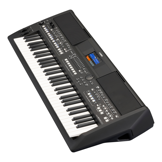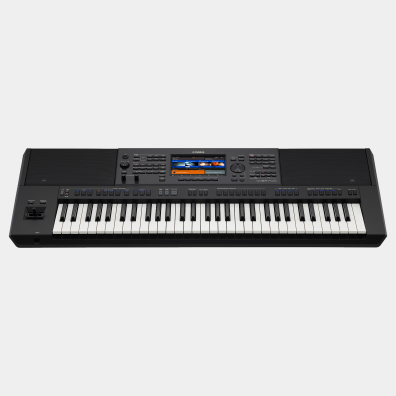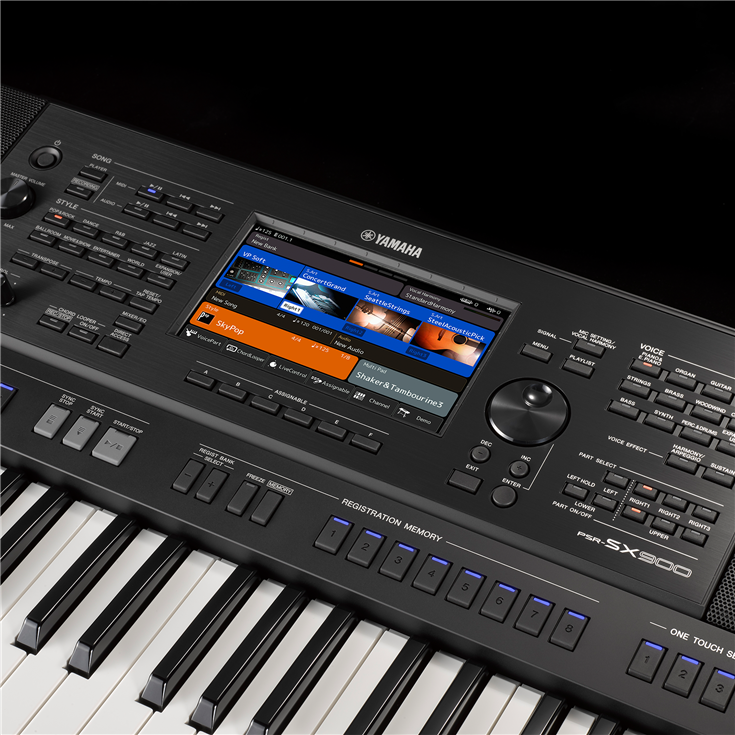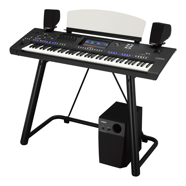A
Solution for the old home organist that is being forced to scale down..
But
still wants to make music with an instrument
that plays like a home organÉ
I. Consider
the massive amount of people that have older home organs..
Years ago, the home organ was the preferred instrument for what we call recreational music. Many many people have grown up with a home organ in their homes. Many of these people are now retired and scaling back. Now with all the kids grown and out of the house there is no longer a need for that large house. As people get older mowing that large lawn and maintaining that large house gets old. Some are moving to Florida, Arizona, or near their children and grandchildren in other parts of the country. Not only is it cost prohibitive to move that old home organ, but that old organ is no longer playing like it used to. There are problems like intermittent static, some stops donŐt work now, a few notes here and there donŐt play. Now, where do you find someone to come and repair the thing. Last time you called someone they wanted $150.00 just to walk in the door and there was no guarantee that they would be able to fix the instrument because there are no parts available.
So the day has come and your house it up for sale or already sold and you have resolved that now is the time to sell that beloved instrument. So you advertise it and donŐt get one call. You drop the price and still no calls. You offer to give it to a few churches and they donŐt want it. You call salvation army and they wonŐt come take it.
You can remember all the hours of playing and the enjoyment your home organ broughtÉ You almost weep to think of the hours of musical memories you had with that beloved instrument. You would love to keep the instrument, but where you are moving to no longer warrants the expense of moving this cumbersome piece of furniture. You dread seeing it go to the dump and you have come to the point that you canŐt even give it away. The moving fee would be more than the instrument is worth even in sentimental value. Yet deep inside you still want music in your life but you know you just will not be able to fit this instrument in the smaller house or little apartment you will be moving into.
Does any of this sound like your situation? In fact everything I am saying may also apply to some people when it comes to that old beloved heirloom upright piano. I have taken many an older upright in on trade when that is all that is left in the house and instead of sending it to a landfill we have re homed it and sold a client a digital piano that could be shipped thousands of miles for less than $100.00 and then removed their old piano for free.
Now in this article we are talking about these old home organs. I believe we have just the answer for your situation if you find your self in a similar scenario as being mentioned in this article.
II. Consider the reason it is so hard
to sell an older home organ:
Just like so many instruments technology has surpassed their value, and worth. With new computer technology there are instruments available that could surpass the sound of that Kimball or Wurlitzer home organ that you paid $10,000 dollars for, or even that massive Lowrey that you paid $20,000 for. Hammond probably sold more home organs than all the other companies combined. However, when Hammond left making organs with tone wheel generators, and started to try to migrate to printed circuit boards this was their undoing. It was not long before they went out of business and all those organs with printed circuit boards today are having terrible static issues and cannot stay repaired. Most of these older organs had massive cabinetry, they were beautiful but again you are not going to be able to do much with them.
Now, if you have one of these instruments and need to figure out what to do with it, I believe we have a solution for you. We have a line of instruments that we can sell you to satisfy your desire to continue to make music and surpass the sound you were able to get out of that old home organ. Not only, this, but most times we can offer you a trade in value towards the purchase of this new instrument.
The instruments that are the modern substitute of the Home Organ market are referred to as Yamaha Digital workstation organ/keyboard. These instruments have a home organ style keyboard which can be programmed and set up to play just like the older style home organs. I started my musical journey playing a Thomas theater organ in 1966 then bought a Farfisa style portable organ and played in combo bands, later I played a Hammond B-3 style organ with a Leslie 122. I had a van dedicated to moving that organ. I traveled all over the country with that organ; I even took it on a ocean cruiser. In 1982, I started selling pianos and organs, and have played and sold hundreds of home organs, new and used. Some of these home organs were massive and cost massive amounts of money. I have been a Lowrey dealer and some of the Lowrey home organs retailed for up to $60,000.00 dollars. Now there is no longer one home organ company left making home organs. The reason for this will become evident as you explore the possibilities of the new workstation digital programmable instruments.
The bottom line is this: I believe we can get you into a workstation set up, that would rival and in many cases, surpass the music you can get out of these older style home organs. You could have as much control and fun with it and not lose the swell pedal capability, nor the bass pedals. It is possible to have a 13 note spinet style bass pedal set up .. or even a 25 note pedal board, or even a 32 note pedal board. I have sold units to people who have retired and moved into an RV and are now living in camp grounds around the country. I have sold set ups for retired people who have retired and are now on a fixed income and living in a senior high rise. I have sold units to people who spend half of the year in Florida and half of the year in the mountains of Northeastern PA.
III. CONSIDER
THE LINE UP OF INSTRUMENTS YOU MAY CONSIDER TO REPLACE THAT OLDER HOME ORGAN
The flagship of the workstation digital instruments is the Genos. A swell pedal can be added along with bass pedals making this small enough to fit into a small utility apartment. Also other stands are available for this instrument to accommadate bass pedals . We have even built small wooden cases to make the instrument look like a minature spinet home organ.
Here is a Video Of A Gospel Demo Of The Tyrus V
Workstation set up like a spinet organ
The predecessor of the Genos was the Tyros, we have some videos demonstrating the Tyros. Everything the Tyros can do the Genos can do .. plus. Mostly the sounds have been upgraded and the slide controls and interface has been updated. All the workstations have a similar set up and working format. The entry level workstation is the model 600 series, then there is the 700 series and then the 900 series and then the Genos. Below is the lineup of instruments from left to right the SX600, SX700, SX900, and then the flagship Genos workstation below. We have all these in stock ready to ship if you are interesting in pricing for a set up call us at 570-352-5501 and ask for Frank.




Here is a video doing a short organ demo on the 600, 700, and 900 series workstations
Spinet home organs generally have 44 note keyboards and on rare occasions 37 notes. Generally console organs have two 61 note keyboards. Some instruments have two 61 note keyboards but 13 note pedal boards. Generally console organs have 25 note pedal boards and spinets have 13 note pedal boards.
The Yamaha Genos workstation has a 76 note keyboard, and the 600, 700, and 900 series instruments have 61 note keyboards.
Generally the Genos is the most versatile instrument to have to emulate an older style home organ.
I was talking to a Yamaha rep a few years back and he mentioned that Yamaha puts most of their research and development into producing the sounds for the Genos and then those sounds over flow into all their other Keyboard instruments like the Clavinova ensemble instruments. So the musical instrument sounds that you get on the Genos are the top of the line replicaŐs of true to life instruments. So the Genos is truly an orchestra at your finger tips. Below is a video or the flagship Yamaha Clavinova. Every sound I demo on this instrument you can get on the Genos...
What is great about the Genos, as well as all the Workstations, is that you can split the keyboard to make the left hand emulate the lower keyboard that is played on a spinet style organ. I generally use a workstation and MIDI it to an organ that we use in our church to get the more up to date digital sounds while getting the more traditional organ sounds for congregational singing. I have a video showing how this works. Just click here.. https://youtu.be/O9ASTsOgCJI to see the video demonstrating how to expand a midi digital organ with a workstation. To me it is like adding another rank of digital pipes or voices to your home organ. Although that is not the purpose of this article maybe some would find this information interesting. It could be of interest for some who may be keeping their larger home organ at one home while half of the year traveling or living in a smaller vacation home or RV.
MIDI stands for Musical Instrument Digital Interface. This feature allows you to expand your instrument and interface it with computers and other instruments that have MIDI capabilities and interfaces. This opens up a whole new world of possibilities for the home organist. It is through MIDI that you can add bass pedals to your Digital Workstation keyboard. With Midi you can even add another manual to emulate a two keyboard organ. It is through MIDI that you can play the voices on the Yamaha digital workstations through your older home organ and upgrade the sounds.
The typical home organ has two manuals and pedals and a swell (or volume) pedal. Those who grew up playing a home organ have become comfortable with this set up. A home organist wants to be able to control the volume of their instrument with a swell pedal. They want to have bass pedals. They would prefer two manuals. They generally play their chord accompaniment with their left hand on the lower keyboard and their solo voices or melody on the upper keyboard with their right hand. Generally unless the organist is classically trained, their left hand stays in a rather narrow range of keys and their right hand stays within the 44 note range and maybe even 37 note range. Many people learned to play the organ with the old pointer system. In that system, all their left hand chords were played within one octave. So if you divide a 61 note workstation keyboard to assign one octave in the left hand for chords that will leave you 49 notes on the right hand for the melody. The truth is that I usually assign a little larger area for the left hand. On the Genos 76 note keyboard the range is comfortable to emulate the playing of just about any spinet home organ. Also the trained organistŐs many times will play both hands on one keyboard, so if split properly, the Genos can approximate the playing of a console organ, a home organ and in some cases a classical organ. Also you can turn the touch sensitivity on or off to accomadate your playing style.
After adding a FC7 volume pedal and bass pedals I have found that I can play any of the workstation digital keyboards and get the musical experience you might get from playing a home organ and in almost every case exceed that of which you would experience from any of these older instruments.
Is there a limitation. Yes, you do not have physical tabs and it is not as easy to change sounds as it would be on a tab based instrument. Remember your scaling down in size and all those tabs take up space and require a larger cabinet. However, what the workstations do give you is the ability to emulate Hammond drawbars which are a step up from tabs if you know how to use them. Also in the Genos are virtual organ tabs just like your home organ without the need of the physical size needed to house mechanical tabs. So in essence you do not loose the ability to blend organ sounds like you are used to on your homes organ. There is a company in England that put out a good video demonstrating this feature
It is rare that the sounds of that older home organ will be as good as what you will get from the these newer digital workstations. Also there are unlimited preset registration memories you can use to make up for the physical limitations of not having physical tabs. Also in those early years the reeds did not sound like reeds, strings did not sound like violins, the flutes did not sound like flutes, the rhythms were usually not very good. Today all that has changed. The instruments all sound realistic.
For those who do not play bass pedals, the styles on the workstations are outstanding and add professional background instruments. They work pretty much the same as the older Lowrey easy play organs. In the style mode they can set up to be played with one finger chords, the typical three finger chords, inverted chords with bass, full keyboard, and full keyboard with inverted bass in the left hand. In other words you can play styles with just about any method of chord playing imaginable.
Now beyond all this there are features that the workstations have that far exceed what you could do with your home organ. One of the great features of the 900 series is the Vocal harmony feature. It is great for sing a-longs or doing vocal back ups for a solo singer or even just having fun with the kids or grandkids with Karaoke sing along files. We have a large library of Karaoke music that we can provide when you purchase an instrument through us. I have a video demonstrating this feature.
I am convinced that the Genos or the 900 series or one of the other entry level workstations are the best solution for people who are looking to retire that larger home organ but still desire to play an instrument that will give them the same enjoyment they received when they played that beast of a home organ that they can no longer physically fit in their home or apartment. Also this instrument will open up opportunities to an instrument to play at nursing homes, senior centers, church activities and a host of other venues. I have one client that vacations all winter in his RV and uses his workstation to play at get togethers at different camp grounds he visits in Florida in the winter.
I have a series of videos that show how you can play the Yamaha Workstations like a home organ. Clink Here to go to my Youtube playlist with these videos.
I hope you found this article helpful. Feel free to contact us about purchasing one of our Yamaha Workstations and the solutions we have available to you. For pricing on the different model workstations go to our website at this link PIANODEPOT.COM WORKSTATION PAGE
Sincerely
Frank Bissol (Owner)
frankbissol@gmail.com
To purchase on line you can go to
https://pianodepot.com/workstation-keyboards/